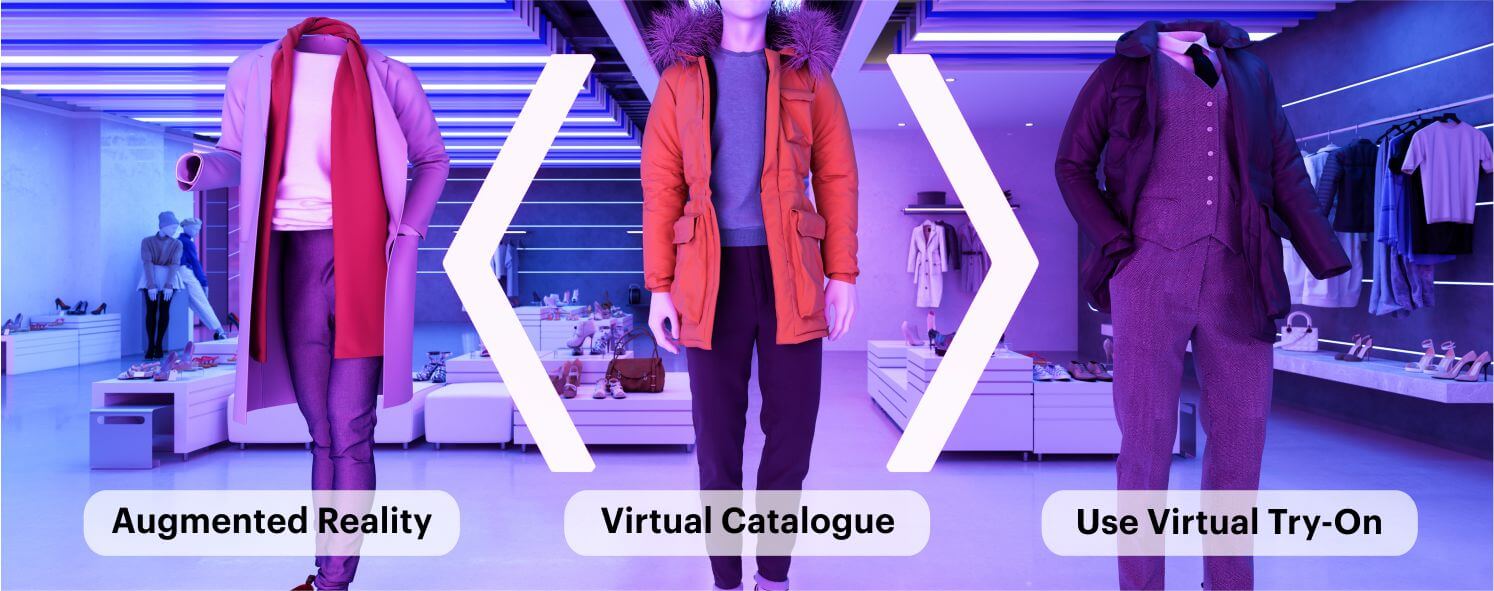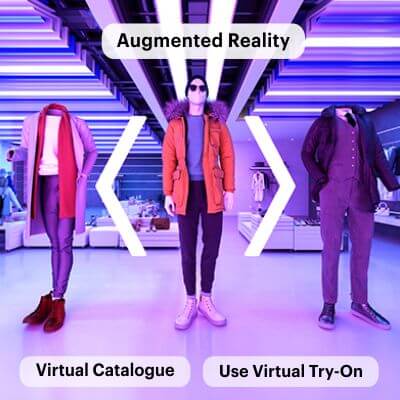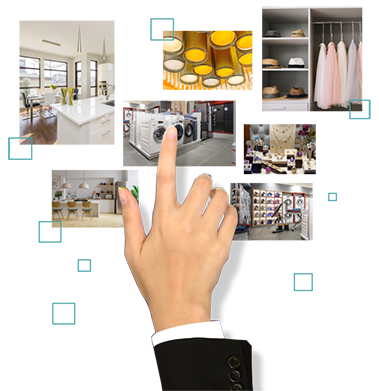Synopsis:
eCommerce continuously needs to adapt to innovative strategies to captivate consumers. Visual commerce technology reshapes online shopping by offering dynamic visual experiences.
This blog explores the transformative power of visual commerce in modern eCommerce. From dynamic visuals to user-generated content and augmented reality, it delves into how these elements reshape the online shopping experience, driving engagement and sales.
The blog demonstrates how visual commerce enhances customer interactions, reduces uncertainties, and boosts conversion rates. In today's competitive marketplace, embracing visual commerce isn't just a trend—it's a necessity for eCommerce success.

Introduction
Since its inception, eCommerce has evolved tremendously over the past few years. Now, having an online store is no longer sufficient; businesses must capture and hold consumers’ attention to thrive. Modern eCommerce websites must use visual commerce to appeal to customers.
Visual commerce reshapes the online shopping experience by incorporating dynamic visual elements that engage and entice customers like never before. It has a wide spectrum of images, videos, interactive 3D models, and augmented reality that mimic the tactile satisfaction of traditional brick-and-mortar stores.
These modern eCommerce websites aim to create an emotional connection between consumers and brands, fostering trust and loyalty in the process. This blog will look further into visual commerce and how it can help increase online eCommerce store sales.
Why Ecommerce Businesses Use Visual Commerce
Visual Commerce extends beyond simple product photography to include a variety of visual elements that illustrate products in engaging, interactive, and highly contextual settings
Visual commerce extends beyond simple product photography to incorporate a variety of visual elements that illustrate products in engaging, interactive, and highly contextual settings. This approach harnesses the power of high-quality images, videos, 3D models, user-generated content, and augmented reality. The goal is to provide consumers with a rich visual experience that emulates the tactile satisfaction of shopping in physical stores.


1. Customer Experience
Visual commerce revolutionizes the customer experience by allowing shoppers to see products in detailed, realistic scenarios. This might mean viewing a particular furniture piece in various room settings, trying on a watch virtually, or seeing how a dress looks in different colours.
Such immersive experiences help reduce the uncertainty often associated with online shopping, thereby reducing cart abandonment and
increasing conversion rates.
2. Peer-to-Peer Connection
Customers today rely heavily on peer reviews and shared shopping experiences. Visual commerce utilises this by including user-generated content such as customer photos and videos into the buying journey.
This peer-to-peer connection builds trust and validates the customer’s purchase decision, as they can see real-life applications of the products they are considering.
3. Authentic Social Proof
Visual Commerce offers a platform for displaying authentic social proof. Through customer reviews that include visual content, potential buyers can see how the product performs in real-time situations, which improves credibility and encourages purchase decisions.
This type of social proof is more convincing than traditional text-only reviews, adding a layer of trust and transparency that today’s savvy online shoppers appreciate.
How to Increase Online eCommerce Store Sales
Visual presentation of products has become essential to capturing customer interest and driving sales. Here’s how eCommerce stores can harness the power of visual commerce to enhance user engagement and increase sales.
1. Put Visual Content to Work on Product Pages
Effective visual content on product pages can improve the customer experience and increase conversion rates. High-quality videos and images that showcase products in various uses and settings help provide customers with a better understanding of the product.
Including multiple angles and zoom options allow for detailed inspections, while video demonstrations or 360-degree views bring products to life and offer a closer look akin to a physical store.
These enhancements help customers make more informed decisions that reduce hesitation and potentially increase the likelihood of purchase.
2. Create Standalone Galleries of Customer Content
Creating standalone galleries where customers can see user-generated content such as photos and videos of others enjoying their purchases adds a layer of social proof that can be more compelling than traditional marketing materials.
This not only promotes community among users but also acts as a powerful endorsement of the product’s value and versatility. Prospective buyers can visualise the product’s application in real-world settings, greatly influencing their buying decisions and enhancing the credibility of the brand.
3. Leverage Social Commerce
Social media platforms are crucial in the consumer decision-making process. Incorporating your eCommerce store with these platforms allows for the utilisation of shoppable posts and ads, which can convert users directly from a social media feed into a shopping cart.
This strategy capitalises on impulse buys and reduces the steps in the buying process to create a faster and smoother path to purchase and potentially reduce cart abandonment rates.
4. Add 3D Images Using Product Configurator for Customisation
Customisation is the key factor in customer satisfaction and loyalty. By adding a product configurator that uses 3D images, businesses can let customers personalise products to their liking, from changing colours and materials to selecting different styles.
This approach improves the user experience by engaging customers in the design process and helps in visualising the final product before purchase, thereby minimising dissatisfaction and returns.
5. Use Virtual Try-On
Virtual try-ons can transform the shopping experience for sectors like fashion and accessories. These solutions use smartphone technology to allow customers to see how items like glasses, jewellery, or clothing look on them.
This powerful tool helps mitigate doubts about fit and appearance, boosting consumer confidence in their purchasing decisions and decreasing return rates.
6. Add a Virtual Catalogue
Changing your static product catalogue into a dynamic, interactive virtual catalogue can recreate the tactile pleasure of flipping through a magazine with the convenience of online shopping.
These digital catalogues can be designed to include interactive elements like clickable products for additional information or visualisations of products in different environments. This helps draw customers deeper into the purchase funnel.
7. Use Augmented Reality in Visuals
Augmented Reality (AR) bridges the gap between online shopping and the tactile, immersive experience of a physical store. AR can allow customers to visualise products in their own living spaces, whether it’s furniture decor or wearable items.
AR can reduce the uncertainty that often accompanies online shopping by allowing customers to see how products fit and look in their actual intended environment, thereby improving customer satisfaction and reducing the likelihood of returns.














